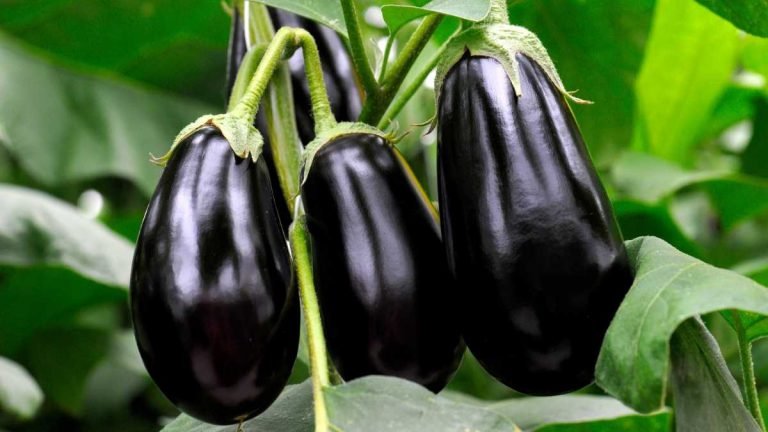How to plant eggplants: In this article, we’ll take a step-by-step look at how to properly plant eggplants for a rich harvest.
How to plant eggplants: our guide
- Plant eggplants when soil temperatures are above 10°C (eggplants need to be planted in warm soils because they can’t tolerate frost).
- Plant eggplants well spaced 50-60 cm apart and secure them to prevent them from turning over.
- Choose an area with lots of sunlight and very fertile soil.
- Improve the soil by mixing aged compost with other rich organic matter.
- Keep the soil moist but not excessively so.
- Keep your plants nourished by feeding them regularly with a controlled-release fertilizer.
- Once the plants reach a height of 15 cm, apply a layer of organic mulch, such as crushed leaves or bark.
- Remove eggplants when the vegetables stop growing and their skin becomes shiny.
- Pull out ripe eggplants with gardening shears.
How to plant eggplants: soil and care
Eggplants need to be planted in warm soil: they like warmth and grow best in sunny places.
Since eggplants really need warm soil to grow well, during cold climates gardeners prefer to plant the plants in large dark pots.
On sunny days, soil temperatures in black pots can be higher than soil temperatures in the ground. Although the rough, leathery leaves are heat resistant, eggplants need a generous mulch of hay, shredded leaves or other biodegradable material under the plants to keep the soil cool and to retain moisture.
Eggplants grow tall, so they should be spaced 50-60 cm apart.
Improve eggplant growth by adding compost to help retain moisture and add fertilizer to the soil. Put the plants at the same depth as they grow in the pots and water them well before adding the fertilizer. In the case of a late cold snap, it may be necessary to delay planting until the cold passes. In these cases, keep the plants in a sunny outdoor location during the day and bring them home at night. Be sure to keep the plants well watered: they need a good supply of moisture but not too much!
Problem solving
Eggplant’s worst enemy is the beetle, but large, healthy plants, grow well despite the small leaf holes made by many beetles. In some areas, there is a fungus present in the soil, Verticillium; it can make the plant wilt and die. In these cases, plant eggplants in containers full of high quality soil.
How to Harvest and Store Eggplants
Eggplants can taste bitter if harvested when green or overripe.
The eggplant will be fine when it stops growing and has a shiny skin and soft, well-formed seeds when you cut it. Eggplants without visible seeds are immature. Hard, dark seeds are found in overripe eggplants.
Eggplants will discolor quickly when opened. Use the eggplants quickly. Lemon juice, salt and vinegar prevent the cut pieces from darkening.

